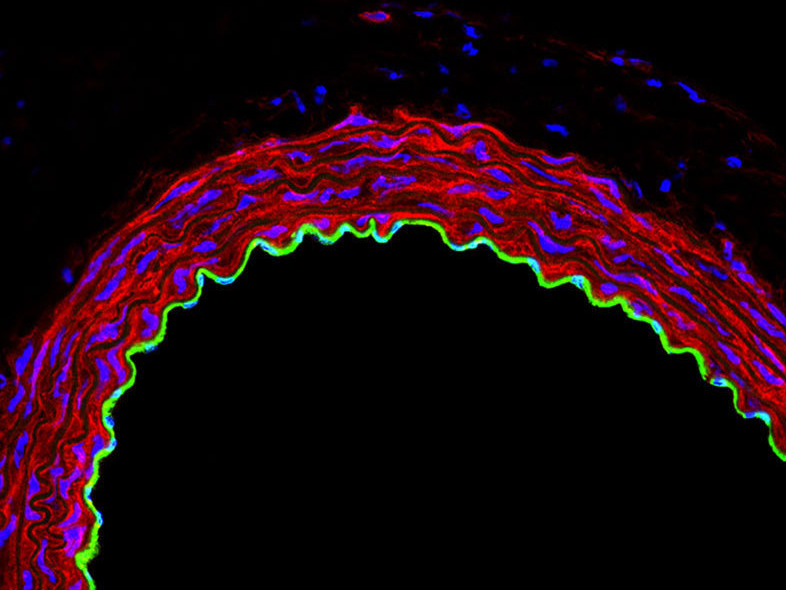Controlling blood pressure is one of the body’s most complex control functions. High blood pressure (hypertension) is a primary risk factor in the development of many cardiovascular diseases. The underlying molecular mechanisms, however, are still not fully understood.
Stefan Offermanns, Max Planck Institute for Heart and Lung Research, Bad Nauheim, Germany, and colleagues found that the P2Y2 receptor, a docking site for ATP, is located in the middle of the regulatory mechanism. Switching off this receptor in mice, lead to an increase of their blood pressure. In blood vessel cells, the P2Y2 receptor is activated indirectly via the shear stresses of the flowing blood. At the end of a reaction cascade, whose components the team also identified, nitrogen monoxide is formed. It relaxes the blood vessel wall and by this reduces blood pressure.
The scientists want to examine the extent to which malfunctions in this key blood pressure regulation principle are responsible for the development of vascular diseases such as hypertension and atherosclerosis.
Microscopic image of a cross-section of a blood vessel shows the thin inner layer of cells (endothelium; green)
and the vascular muscle cells (red). Cell nuclei (blue). © MPI f. Heart and Lung Research
- P2Y2 and Gq/G11 control blood pressure by mediating endothelial mechanotransduction,
ShengPeng Wang, András Iring, Boris Strilic, Julián Albarrán Juárez, Harmandeep Kaur, Kerstin Troidl, Sarah Tonack, Joachim C. Burbiel, Christa E. Müller, Ingrid Fleming, Jon O. Lundberg, Nina Wettschureck, Stefan Offermanns,
J. Clin. Invest. 2015.
DOI: 10.1172/JCI81067




